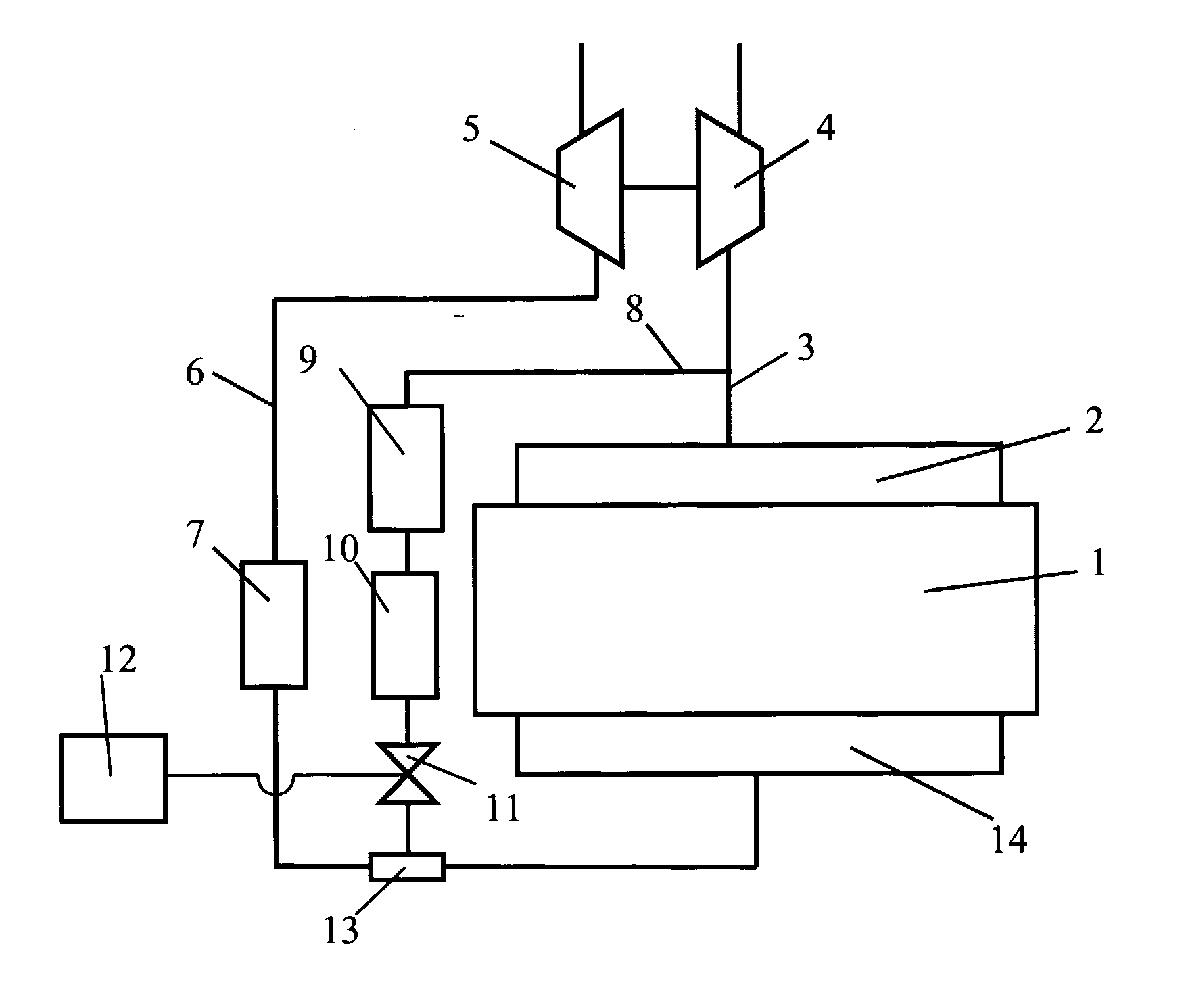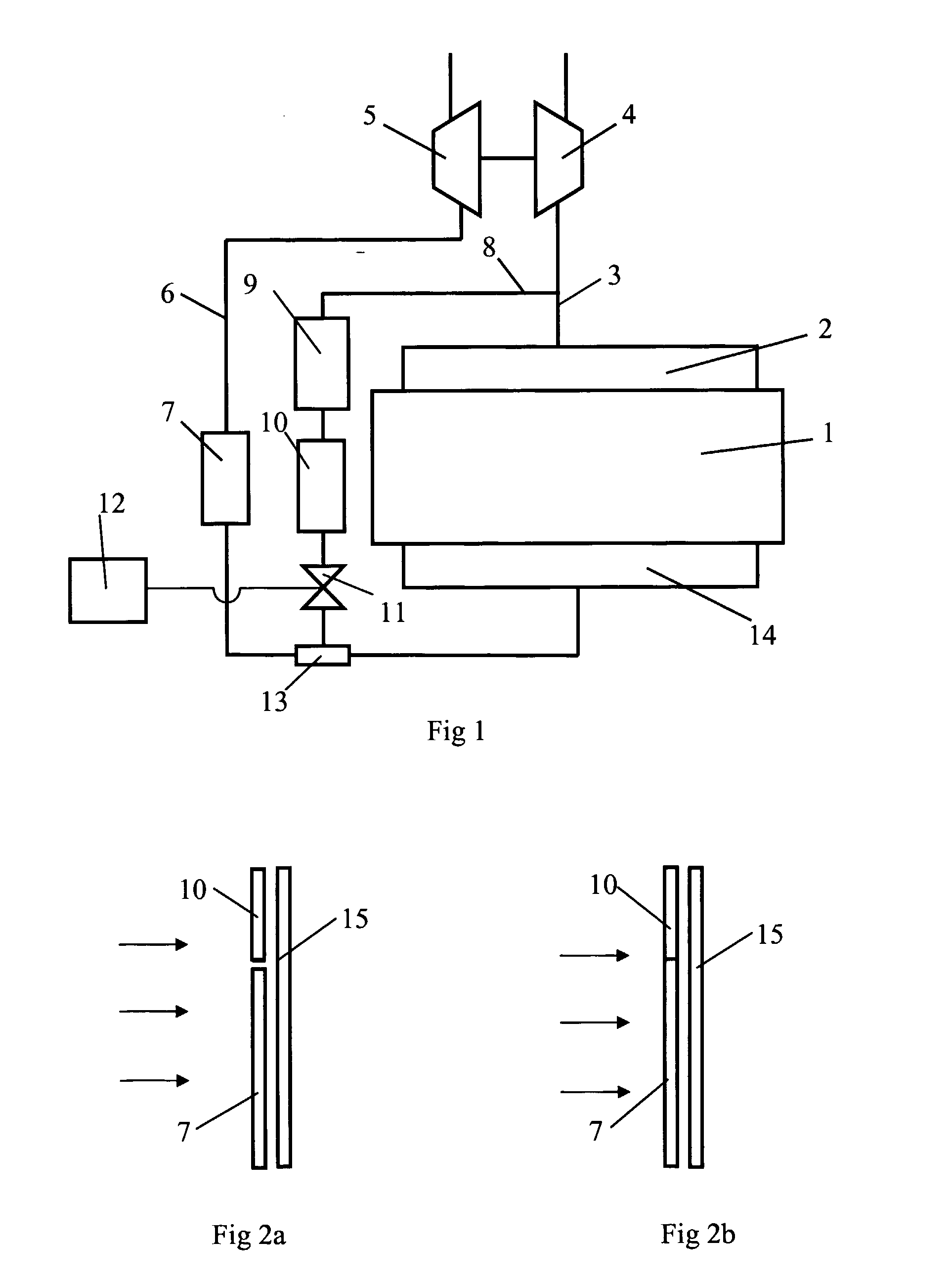Arrangement for recirculation of exhaust gases of a super-charged internal combustion engine
a technology of exhaust gas and combustion engine, which is applied in the direction of machines/engines, mechanical equipment, non-fuel substance addition to fuel, etc., can solve the problems of relatively large difference between the temperature of the coolant and the temperature of the exhaust gas, and the effectiveness of gaseous cooling medium such as air is usually not particularly effectiv
- Summary
- Abstract
- Description
- Claims
- Application Information
AI Technical Summary
Benefits of technology
Problems solved by technology
Method used
Image
Examples
Embodiment Construction
[0014]FIG. 1 depicts schematically an arrangement for recirculation of exhaust gases in a supercharged combustion engine. The combustion engine is in this case a diesel engine 1. Such recirculation is usually called EGR (Exhaust Gas Recirculation). Adding exhaust gases to the compressed air which is led to the engine's cylinders lowers the combustion temperature and hence also the content of nitrogen oxides (NOx) which are formed during the combustion processes. The diesel engine 1 may for example be intended to power a heavy vehicle. The exhaust gases from the cylinders of the diesel engine 1 are led via an exhaust manifold 2 to an exhaust line 3. The exhaust gases in the exhaust line 3, which are at above atmospheric pressure, are led to a turbine 4. The turbine 4 is thus provided with driving power which is transferred, via a connection, to a compressor 5. The compressor 5 compresses the air which is led into the inlet line 6. A charge air cooler 7 is arranged in the inlet line 6...
PUM
 Login to View More
Login to View More Abstract
Description
Claims
Application Information
 Login to View More
Login to View More - R&D
- Intellectual Property
- Life Sciences
- Materials
- Tech Scout
- Unparalleled Data Quality
- Higher Quality Content
- 60% Fewer Hallucinations
Browse by: Latest US Patents, China's latest patents, Technical Efficacy Thesaurus, Application Domain, Technology Topic, Popular Technical Reports.
© 2025 PatSnap. All rights reserved.Legal|Privacy policy|Modern Slavery Act Transparency Statement|Sitemap|About US| Contact US: help@patsnap.com


